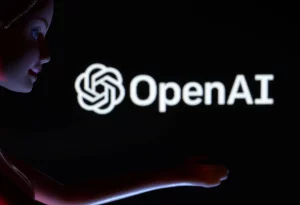As we pass the one-year mark since OpenAI’s ChatGPT emerged, its presence has expanded even further, raising questions about our ability to regulate and address the real-world consequences of generative AI. The technology has outpaced our capacity to manage its potential harms, making 2024 a potentially crucial year for generative AI and machine learning as a whole. Will AI continue to revolutionize human-computer communication, akin to the introduction of the mouse in 1963, or are we on a path toward another overhyped technological phenomenon, reminiscent of 3D televisions? Let’s explore the impact of OpenAI and its chatbot on consumer electronics in 2023 and speculate on their potential influence in the coming year.
OpenAI had a great year, all things considered
OpenAI’s ascent in 2023 has been nothing short of meteoric. ChatGPT, released on November 30, 2022, surpassed 1 million users within five days. By January, the program was attracting 100 million users monthly, achieving engagement numbers that took Facebook four and a half years to reach. In 2023, ChatGPT outpaced the rapid launches of TikTok and Instagram, making it the fastest-adopted program in the history of the internet. As 2024 approaches, OpenAI, backed by billions from Microsoft, has established itself at the forefront of the generative AI industry. However, the question of whether it can maintain this position amid intense competition and substantial investments in rival research and development remains to be seen.
This year of success propelled OpenAI’s CEO, Sam Altman, into the media spotlight. The 38-year-old former head of Y-Combinator garnered praise reminiscent of that once directed at Elon Musk. Altman became a prominent figure, appearing before Congressional committees, participating in the Senate’s AI Safety Summits, and embarking on a 16-city world tour to countries such as Israel, India, Japan, Nigeria, South Korea, across Europe, and the UAE. The tour aimed to promote ChatGPT to developers and policymakers globally.
i’m doing a trip in may/june to talk to openai users and developers (and people interested in AI generally). please come hang out and share feature requests and other feedback!
more detail here: https://t.co/lp9WkI811R or email oai23tour@openai.com
— Sam Altman (@sama) March 29, 2023
Sam Altman’s termination by OpenAI’s board of directors in November turned out to be a surprising net positive. His dismissal, which occurred on a Friday, triggered a 72-hour period of upheaval in Silicon Valley. In response to Altman’s firing, multiple leaders within OpenAI resigned in solidarity, approximately 95 percent of rank-and-file staff threatened to walk out unless he was reinstated, two interim CEOs were appointed and removed within two days, and Microsoft indirectly intervened. Ultimately, Altman was reinstated as CEO of OpenAI, now with a more cooperative and agreeable board. This episode left an industry-wide understanding that attempting to oust Sam Altman might result in his becoming more influential and powerful than anticipated.
Keeping pace proved a challenge for OpenAI’s competition
The immediate and overwhelming success of ChatGPT can be attributed significantly to being the first of its kind in the market. While image generators like DALL-E and Midjourney were already popular, and the public had become accustomed to more routine machine learning tasks such as language translation, OpenAI introduced the first generative AI program that engaged in natural conversation with users. This novelty proved to be a crucial advantage, as even tech giants like Google and Amazon, with substantial R&D budgets, found themselves unprepared for the unprecedented demand and were slow to respond with competing products.
Google’s response to ChatGPT was particularly notable. Following the debut of ChatGPT, Google dedicated a significant portion of its I/O Developers Conference in March to unveil various generative AI models and platforms, including the introduction of the Google Bard chatbot. Bard was positioned as Google’s answer to ChatGPT, though it faced challenges initially. Even before its public release, Bard made an embarrassing first impression in February when it confidently provided incorrect information about the James Webb Space Telescope in a Twitter ad.
Throughout the year, Google continuously enhanced Bard by adding features, capabilities, and expanding access. In December, the entire platform was transitioned to Gemini, Google’s recently released foundational model, touted as the company’s “most capable and general model” to date. However, Google faced scrutiny when it was revealed that the system’s capabilities were misrepresented during a video demonstration. Despite surpassing ChatGPT in a majority of industry-standard performance benchmarks, using the unreleased Gemini Ultra model to achieve these scores drew criticism. Moreover, the narrow margins by which Gemini Ultra outperformed GPT-4, which had been released nearly a year prior, raised concerns. This situation did not reflect favorably on Google, especially considering the vast research budgets the company commands, comparable to the GDP of small nations.
Microsoft had a prosperous 2023, thanks to its $10 billion investment in OpenAI in January, forming a multi-year partnership. This collaboration led to the augmentation of Bing, as well as various other components within the Microsoft ecosystem, with algorithmic intelligence. Microsoft is poised to receive 75 percent of all OpenAI’s profits until the invested billions are recouped, marking a successful year for the tech giant.
Amazon also made significant strides in the generative AI landscape in 2023. The company invested $4 billion in Anthropic’s Claude LLM and integrated generative AI into various facets of its business, from smart glasses like Echo Frames to Alexa with Generative AI and NFL Thursday Night Games. Amazon introduced the Bedrock foundational model platform, offering AI-generated text and images as a cloud service, initiated free AI Ready developer courses, launched an accelerator program for genAI startups, unveiled generative tools for background and product listing creation, and introduced a standalone image generator AI to compete with DALL-E.
Amazon’s CEO, Andy Jassy, emphasized the company’s commitment to building generative AI applications across all teams to enhance customer experiences. Jassy highlighted the importance of bringing generative AI models to data and expressed optimism that many of these applications would be built on Amazon Web Services.
We’re still not ready for the age of AI
Generative AI technology, even when not employed for malicious purposes such as fraud or spreading misinformation, has caused significant disruption across various industries and institutions, including logistics, manufacturing, education, and healthcare. It is positioned as a potential replacement for humans in professions like medical imaging, computer programming, accounting, journalism, and digital visual arts, often leading to layoffs.
In 2023, labor strikes by the Writers Guild of America and the Screen Actors Guild were notable, reflecting concerns about the use of works and likenesses to train AI models. Independent artists, whose intellectual property has been exploited by unscrupulous firms for model training, have faced challenges in protecting their creations.
Data privacy emerged as a crucial issue for AI companies. A ChatGPT bug in March exposed chat history titles and potentially payment data. Samsung employees inadvertently disclosed company secrets when using ChatGPT to summarize a business meeting in April. In September, Microsoft AI researchers accidentally uploaded 38TB of company data to an open-access Azure web folder, coinciding with the discovery that Google unknowingly leaked users’ Bard conversations into general search results. As recently as November, security researchers found that seemingly innocuous attacks, such as instructing ChatGPT to repeat a word endlessly, could trick the system into revealing personally identifiable information.
In response to the growing issues related to generative AI technology, the initial institutional reaction in 2023 involved measures taken by school districts, government agencies, and Fortune 500 companies to restrict the use of chatbot AIs by employees and students. However, these initial efforts proved largely ineffective, given the challenges in enforcement. The federal government has taken a more robust regulatory approach.
The Biden White House has prioritized AI regulation, with a focus on developing an “AI Bill of Rights” blueprint, investing millions in new AI research and development centers for the National Science Foundation, securing development guardrail concessions from leading AI companies, and launching an AI Cyber Challenge, among other initiatives. One of the administration’s most significant actions occurred in October, when President Biden issued a comprehensive executive order establishing broad protections and best practices for user privacy, government transparency, and public safety in future AI development by federal contractors. Both the US Senate and House have been active as well, conducting congressional hearings on federal oversight rules for the AI industry, hosting AI Safety Summits, and drafting legislation (which is pending a vote).
Looking ahead to OpenAI’s 2024 and beyond
OpenAI holds a strong position as a leader heading into the new year, with CEO Sam Altman exerting firmer control over the company, dissenting voices on the board silenced, and plans for further expansion in 2024 as generative AI technology continues its global advancement. While competitors such as Google, Meta, and Amazon are expected to intensify their efforts in AI research to catch up and surpass the GPT platform, OpenAI remains at the forefront.
The gains in 2024 are anticipated to be significant in enterprise applications, with generative AI integrated into enterprise software to enhance knowledge workers’ efficiency and decision-making, according to Paul Silverglate, vice chair of Deloitte LLP. A study by McKinsey & Company suggests that the current generation of conversational AI systems has the potential to automate work activities absorbing 60 to 70 percent of employees’ time. Rapid advancements in natural language processing technology could lead to the automation of “half of today’s work activities” between 2030 and 2060, a decade sooner than previously estimated.




